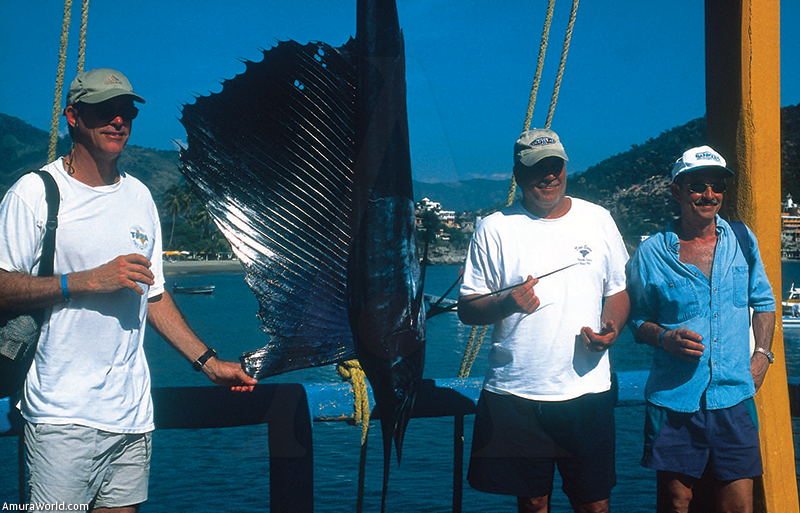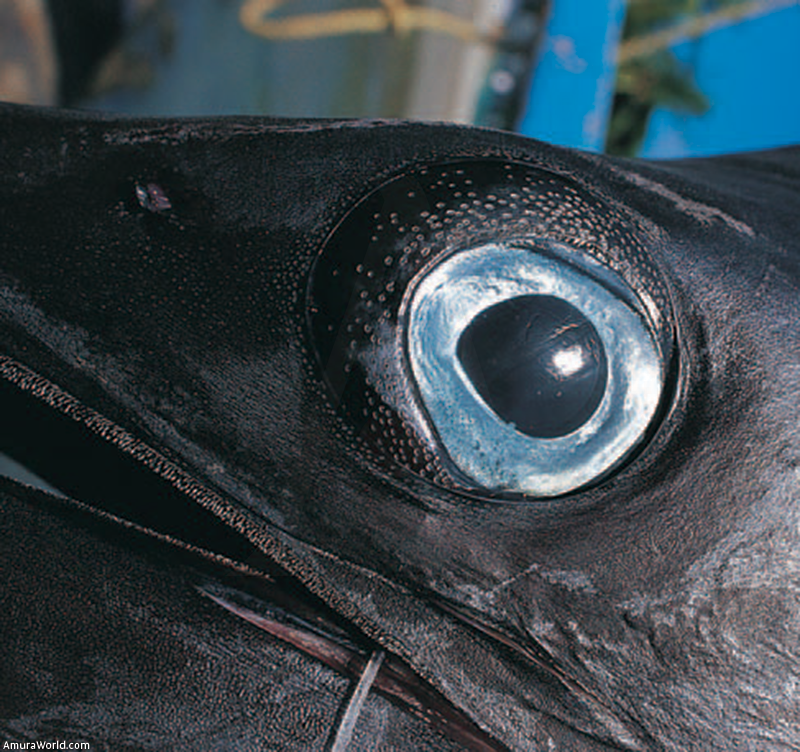Manzanillo is a port recognized throughout the world for its sports fishing. The reason is that it is so easy to catch certain species, among them marlin and istiophorus platypterus, or sailfish. In fact, this destination is known as the Sailfish Capital of the World.
The sailfish, which is related to the swordfish and the marlin, is normally found in tropical and subtropical waters. These fish have very good eyesight and many experts conasider them one of the fastest species in the sea, since they can reach speeds of up to 80 kilometers (about 50 miles) per hour.
Sailfish release eggs that, once fertilized, give birth to larvae that live near the surface of the water, making them easy prey to a large variety of predators. Of the over one million eggs that the female discharges, less than half a dozen become adult fish.
The larvae turn into small sailfish and from about three centimeters (about one inch) they can grow to 2.4 meters (about 7.9 feet) long and weigh 63.6 kilograms (about 140 pounds). Generally, the female is larger; however, the average varies between 31.8 and 45.5 kilograms (70 and 100 pounds).
Let’s go fishing
Sailfish are mostly caught with either conventional or fly fishing equipment and both ways involve trolling. Lures and baits are dragged behind a sports fishing boat while it slowly moves through the water. It is extremely important that the reel have a very smooth drag and an anti-reversing feature.
On occasion, the boats drag plastic figures of squid and other small animals that are known as “teasers”, because they incite the fish to come closer for a better look and, hopefully, make a pass at the bait.
One method of capture is, when the fish takes the lure, the crew lets it swim away before setting the hook. The reason for this is that the inside of the sailfish’s mouth is very hard and the hook will not set firmly. We recommend using round hooks that are designed so as not to hurt the fish. Should the line break, it dissolves in a few days.
But the most common way to catch a sailfish is by the method known as fly fishing: the boat travels through the water dragging one or several “teasers,” hoping that the sailfish will rise to the surface.
When it does rise to the surface, the “teaser” is reeled in as quickly as possible while the fisherman throws in the fly fish. The idea is to use a “bait and switch” technique on the sailfish, so the fly has to fall in front of it or a little bit to the side.
Swimming with a Sailfish
Several people have asked if it is possible to swim alongside a sailfish when it is released, but most experts say that it is not recommended. The bill of this species is a powerful weapon, even when the fish is exhausted after fighting the angler. Sailfish have been known to use their beak like a club to stun and wound their prey before eating it. They follow a fish, or a school of fish, and when they catch up to them they try to whack them, swinging their beak from side to side, hitting as many as possible.
Afterwards, they swim back and eat any fish that is writhing on the surface. Animal muscle, pound for pound, is stronger than our own, so that if a person is hit by the bill of a sailfish he or she could get a really bad bruise or even a more serious injury.
Text: Fabiola Galván Campos ± Photo: Archivo.




